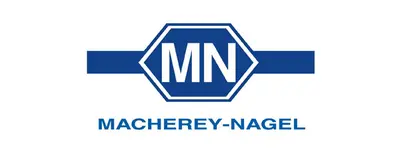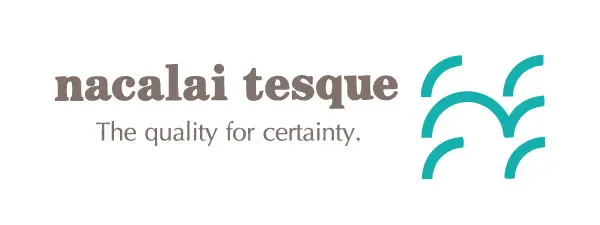- 3% Discount on online orders
- Fast Delivery Times
- DIN ISO 9001:2015 Certified
- Manufacturer Expertise
- Contact Us
Checkout using your account
Checkout as a new customer
Creating an account has many benefits:
- See order and shipping status
- Track order history
- Check out faster
Proteins
Proteins are essential macromolecules that occur in all living organisms and fulfil a variety of biological functions, including enzyme activity, signal transmission and structure formation. Their precise analysis is crucial for the understanding of biochemical processes and the development of drugs and biotechnological products. High performance liquid chromatography (HPLC) is a key method for analysing proteins as it enables the precise separation and identification of different protein molecules. HPLC allows proteins to be broken down by size, charge or other chemical properties, making it an indispensable tool in biochemical research and the pharmaceutical industry.
Products
Technical Data
The chromatographic analysis of proteins requires different methods that are used depending on the physico-chemical properties of the proteins. Here are the most important chromatographic methods used to analyse proteins:
1. Reversed phase chromatography
- Principle: In RP-HPLC, proteins are separated based on their hydrophobicity. Hydrophobic proteins bind more strongly to the column and elute later.
- Application: This method is well suited for the separation of proteins and peptides that have different hydrophobicities. It is frequently used in protein purification and peptide sequencing.
- Advantage: High resolution and good reproducibility.
- Disadvantage: Denaturation of proteins by the organic solvents is possible.
2. Size exclusion chromatography (SEC)
- Principle: SEC separates proteins based on their size (molecular weight). Larger proteins migrate faster through the column as they cannot penetrate the pores of the stationary phase as easily as smaller proteins.
- Application: Particularly useful for the investigation of aggregates and oligomerisation states of proteins as well as for the determination of molecular weight.
- Advantage: Native conditions, as there is no denaturation by solvents.
- Disadvantage: Lower resolution compared to other methods.
3. Ion exchange chromatography (IEX)
- Principle: In IEX, proteins are separated according to their charge. A protein binds to either an anionic or cationic stationary phase, depending on its isoelectric point (pI). Elution is achieved by gradually increasing the salt concentration in the mobile phase.
- Application: Very useful for separating proteins with different charges, e.g. isoform proteins or charged impurities.
- Advantage: High separation efficiency for proteins with minimal differences in pI.
- Disadvantage: Sensitive to fluctuations in pH.
4. Hydrophobic interaction chromatography (HIC)
- Principle: In HIC, proteins are separated based on their hydrophobic interaction with the stationary phase. The binding of the proteins takes place in the presence of high salt concentrations, which increase their hydrophobicity. Elution is achieved by gradually reducing the salt concentration.
- Application: Particularly suitable for the separation of proteins with native hydrophobic regions without the use of organic solvents.
- Advantage: Gentle separation of proteins under native conditions.
- Disadvantage: Not so suitable for very hydrophilic proteins.
5. Affinity chromatography
- Principle: This method is based on the specific binding between a protein and a ligand that is bound to the stationary phase. An example is His-tag affinity chromatography, in which histidine-labelled proteins bind to nickel or cobalt ions.
- Application: Particularly useful for the targeted purification of a protein from complex mixtures, such as cell lysates.
- Advantage: High selectivity and purity of the target protein.
- Disadvantage: Relatively expensive and may require special pre-treatment of the protein (e.g. tagging).
Downloads
AMT
HPLC - Reversed Phase:
- HALO Protein C4
- HALO Protein ES-C18
- HALO Protein Diphenyl
GL Sciences
HPLC - Reversed Phase:
- ProteoSil C18
- ProteoSil C4
- MonoSelect RP-mAb
HPLC - HILIC:
- ProteoSil HILIC
HPLC - SEC:
- ProteoSil SEC
HPLC - Mixed-Mode:
- MonoSelect nPEC
Sample preparation - desalination and preconcentration:
- MonoTip C18
Sample preparation - Desalination:
- GL-Tip SDB
- GL-Tip GC
Sample preparation - enrichment of phosphoproteins:
- Titansphere
- MonoTip TiO
Sample preparation - purification and enrichment:
- MonoSpin Series
Imtakt
HPLC - Reversed Phase:
- Intrada WP-RP
- Cadenza CW-C18
UHPLC - Reversed Phase:
- Presto FF-C18
- Macherey-Nagel Nucleodur C18 ec Column Comparison of 300A Protein Separation
- Macherey-Nagel Nucleodur C18 ec Column Comparison for Protein Separation
- Macherey-Nagel Nucleodur C18 ec Protein Test
- Macherey-Nagel Nucleodur C4 ec Protein Test
- Macherey-Nagel Nucleogel SAX Separation of Standard Proteins
- Macherey-Nagel Nucleogel SCX Separation of Standard Proteins
- Macherey-Nagel Nucleosil 300 C18 Protein Fractions in Nacked Barley
- Macherey-Nagel Nucleosil C4 Rabbit Muscle Phosphorylase Kinase - 4 Subunits
- Macherey-Nagel Nucleosil C4 Separation of Histone Variants
Mitsubishi
HPLC - IEX:
- XtalSpeed SP01
- XtalSpeed DA01
HPLC - SEC:
- MCI GEL CQP06, 10µm
- MCI GEL CQP10, 10µm
- MCI GEL CQP30, 10µm
- Nacalai Cosmogel IEX Type Q E.Coli Proteins
- Nacalai Cosmogel IEX Type Q Hela Cell Proteins
- Nacalai Cosmogel IEX Type Q His-tag Protein
- Nacalai Cosmosil C18-AR-300 Amyloid-beta-Protein (Human 1-16)
- Nacalai Cosmosil C18-AR-300 Amyloid-beta-Protein (Human 1-40)
- Nacalai Cosmosil C18-AR-300 Amyloid-beta-Protein (Human 1-42)
- Nacalai Cosmosil C18-AR-300 Amyloid-beta-Protein (Human 25-35)
- Nacalai Cosmosil C18-AR-300 Glycoprotein Bovine
- Nacalai Cosmosil C18-AR-300 Proteinase K
- Nacalai Cosmosil Diol-II E.Coli Proteins
- Nacalai Cosmosil Diol-II Glycoprotein Bovine
- Nacalai Cosmosil Diol-II Glycoprotein
- Nacalai Cosmosil Diol-II Proteinase K Tritirachium Album
- Nacalai Cosmosil Diol-II Proteinase K
- Nacalai Cosmosil HIC Glycoprotein
- Nacalai Cosmosil Protein-R Glycoprotein
- Proteomix® HIC Phases
- Sepax Proteomix HPLC Life-Science Brochure
- Sepax Proteomix RP HPLC Life-Science Brochure
- Sepax SEC-MALS Columns Brochure
- Sepax SRT 1010c SEC Life-Science Brochure
- Sepax SRT SEC Life-Science Brochure
- Sepax SRT SEC-750a SEC Life-Science Brochure
- Sepax SRT-C Zenix-C SEC Life-Science Brochure
- Unix-C SEC-300 UHPLC
- Sepax Unix SEC-300 UHPLC SEC Brochure
- SepaxGP-
- Zenix-80
- Sepax Zenix SEC-80 Zenix-C SEC-80 SEC Brochure
Shodex
HPLC - Reversed Phase:
- Silica C18M 4D
- Asahipak ODP-50 6D
- Asahipak C4P-50 4D
HPLC - SEC:
- Protein KW Series
- Protein LW Series
- OHpak SB-802 HQ
- Asahipak GF-510 HQ
HPLC - IEX:
- IEC SP-FT
- IEC QA-825
- IEC SP-825
- IEC DEAE-825
- IEC CM-825
- Asahipak ES-502C 7C
- Asahipak ES-502N 7C
HPLC - Mixed-Mode:
- Asahipak GS-320 7G
Thermo
HPLC - Reversed Phase:
- Accucore 150-C4
- ProSwift RP
- PepSwift
HPLC - HIC:
- MAbPAC HIC Series
- ProPac HIC
HPLC - IEX:
- ProPac Elite WCX
- ProPac SAX-1
- MAbPac SCX
- ProPac 3R IEX
HPLC - metal affinity chromatography:
- ProPac IMAC-10
- Thermo Accucore HPLC Columns for Biomolecule Separations HPLC Life Science Brochure
- Thermo BioLC Columns Consumables HPLC Life Science Brochure 2022-23
- Thermo MAbPac HIC HPLC Life Science Brochure
- Thermo PepSwift ProSwift HPLC Brochure
- Thermo ProPac 3R Brochure
- Thermo ProPac IMAC 10 HPLC Life Science Brochure
- Thermo ProPac HIC 10 HPLC Life Science Brochure
- Thermo ProSwift RP HPLC Life Science Brochure
Tosoh
HPLC - SEC:
- TSKgel SW
- TSKgel SWXL
- TSKgel SuperSW
- TSKgel UltraSW
- TSKgel UP-SW
Proteins - IEX:
- TSKgel BioAssist S
- TSKgel BioAssist Q
- TSKgel Q-STAT
- TSKgel SP-5PW
- TSKgel DEAE-5PW
- TSKgel CM-5PW
- TSKgel SP-STAT
- TSKgel CM-STAT
- TSKgel SP-NPR
- TSKgel DEAE-NPR
- TSKgel SuperQ-5PW
Proteins - HIC:
- TSKgel Phenyl-5PW
- TSKgel Ether-5PW
- TSKgel Butyl-NPR
Proteins - Reversed Phase:
- TSKgel Protein C4-300
- TSKgel TMS-250
- Tosoh Chromatography Catalogue 2019
- Tosoh TSKgel SuperSW2000 Separation of Mixture of Proteins and Peptides Applications
- Tosoh TSKgel G3000SWXL SEC-UV-RI-MALS Analysis of Protein Aggregates Applications
- Tosoh TSKgel BioAssist S Separation of Standard Proteins
- Tosoh TSKgel BioAssist S Separation of Standard Proteins
- Tosoh TSKgel DEAE-NPR, Octadecyl-NPR Separation of Protein Mixture
- Tosoh TSKgel G2000SWXl, G3000SWXL Separation of Standrad Protein Mixture
- Tosoh TSKgel Octydecyl-NPR, Octadecyl-4PW Separation of Standard Proteins
- Tosoh TSKgel Octydecyl-NPR, Octadecyl-4PW Separation of Standard Protein Mixtures (2)
- Tosoh TSKgel Octadecyl-NPR TSKgel Octadecyl-4PW Separation of Standard Proteins by RPC Applications
- Tosoh TSKgel phenyl-5PW, Ether-5PW Separation of Standard Proteins
- Tosoh TSKgel SuperSW2000 Separation of Mixture of Proteins and Peptides Applications
- Tosoh TSKgel SuperSW2000, SuperSW3000 Separation of Standard Protein Mixture
Waters
UHPLC - HILIC:
- ACQUITY Glycoprotein BEH Amide, 1.7µm
UHPLC - HIC:
- Protein-Pak Hi Res HIC, 2.5µm
HPLC - HIC:
- Protein-Pak Hi Phenyl, 10µm
UHPLC - IEX:
- BioSuite Anion-Exchange, 2.5µm
HPLC - IEX:
- BioResolve SCX mAb, 3µm
- BioSuite DEAE Anion-Exchange, 10µm
- BioSuite SP Cation-Exchange, 10µm
- BioSuite Cation-Exchange, 7µm
- BioSuite CM Cation-Exchange, 10µm
- BioSuite Q Anion-Exchange, 10µm
- Protein-Pak Hi Res SP, 7µm
- Protein-Pak Hi Res Q, 5µm
- Protein-Pak DEAE 5PW, 12.5µm
- Protein-Pak SP 5PW, 10µm
- Protein-Pak Hi Res CM, 7µm
UHPLC - Reversed Phase:
- ACQUITY Protein BEH C4, 1.7µm
- nanoEase MZ Protein BEH C4, 1.7µm
HPLC - Reversed Phase:
- BioResolve RP mAb Polyphenyl, 2.7µm
- BioSuite Phenyl, 10µm
- DeltaPak C4
- Symmetry C4 300, 3.5µm, 5µm
- XBridge Protein BEH C4
UHPLC - SEC:
- ACQUITY Premier Protein SEC
- BioResolve SEC mAb, 2.5µm
- XBridge Premier Protein SEC, 2.5µm
HPLC - SEC:
- BioSuite Diol (OH), 5µm
- Protein-Pak SEC
The right column for you - we will be happy to support you individually
Competent consultants are always at your side. Write a message to our consultants, we will get back to you and give you individual support.























